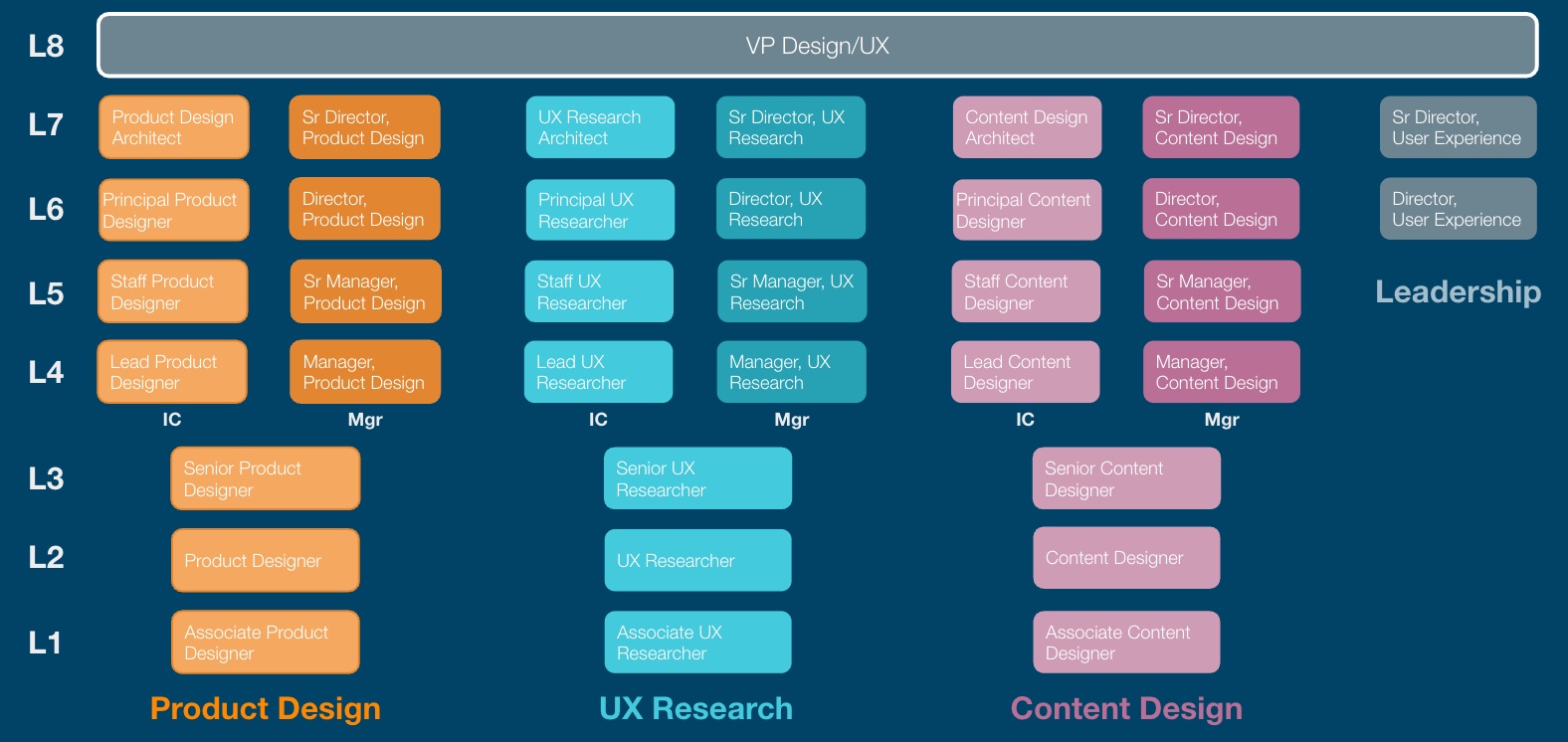From Ladder to Trellis: Flexible UX Career Architectures
I teach a masterclass on building career architectures. To market it, I wrote about it at some length, and it provides an overview of this whole section.
Since I've become independent, perhaps the most common request of my time is helping companies develop good career frameworks for their UX teams. There are many reasons why they want them:
- Provide clear professional growth paths
- Smarter recruiting and hiring practices
- Less biased performance management
- Better alignment with other functions (e.g., product management, engineering)
In creating these frameworks, I resist linear "career ladders," in favor of "trellis," as my experience with people in UX is that they seek a bushier, less-directed growth, and these frameworks need to be flexible to handle the range of practices (design, research, and content) within UX.
I have created a masterclass out of my approach to building these, and will be teaching it at the Design Ops Summit on October 5-6, 2023. You can register for the whole conference or just my class. Either way, use code MERHOLZ-DOS2023 to receive a discount.
The Building Blocks of a Flexible Career Architecture
To create a robust architecture requires a set of components that interact with and build on one another.
Capabilities
The skills, behaviors, mindsets, etc needed to do the work:
- Craft skills
- Strategic mindset and tools
- Professional abilities
Practices
Within any function is a set of Practices. For UX, that’s typically UX Design, UX Research, and Content Design.
Levels
An org-wide Leveling Framework structures a set of expectations for experience, autonomy, and scope at each career level, and across Manager and IC tracks.
Roles
Specific roles are found at the intersection of Levels and Practices, with suitability and readiness made clear by competency in skills.
In the masterclass, we then dig into each component.
Capabilities
We start with Capabilities as they are the 'atom' in a career framework. What are the skills, mindset, and abilities at the heart of the work? Through our activities, we'll land on a Capabilities Taxonomy, which may look something like:
Craft
- Interaction Design
- Visual/UI Design
- UX Writing
- Information Architecture
- Planning Research
- Conducting Research
- Analysis & Insights
- Accessibility Guidelines
- Inclusive Design
- Service Design
- Prototyping
- Experience Strategy
- Technical Literacy
- Business Savvy
Professional
- Communication and Presentation
- Collaboration and Facilitation
- Structuring and Planning
- Work Domain Knowledge
- Navigating the Organization
Practices
The practices in an organization are an amalgam of craft capabilities. In the class, we'll help you identify your distinct practices. In the UX organizations I've been supporting, it usually shakes out to something like:
| Practice | Product Design | UX Research | Content Design |
|---|---|---|---|
| Core skills | Interaction Design Visual / UI Design |
Framing Research Conducting Research Insights and Analysis |
UX Writing Information Architecture |
| Description | Conceptualize, structure, and detail our offerings within the context of a broader user journey. | Conduct research to identify the wants, needs and abilities of customers and end-users, translate those insights into recommendations from strategy to detailed design. | Shape experiences using content and language to build user confidence. Plan, create, and structure product content. |
| Core activities | Understand needs and behaviors; develop insights; diagram flows; design wireframes and prototypes; test solutions | Develop hypotheses; identify methodology; plan research; conduct research; analyze data; synthesize findings; present insights; provide recommendations | Explore voice and tone; Plan content governance; define standards for content types; develop end-to-end content strategy; draft content for end-to-end product experience; review content |
Levels
Many career architectures start with Levels, but it's only after Capabilities have been determined can you build a Levels framework, because how someone advances in their career is contingent on the development of their capabilities.
Years ago, I published the levels I created for the Snagajob Design team, and it has since become a starting point for many UX orgs. My thinking has evolved since then, and I prefer to start with a simpler overview of Levels, to then save the complexity for when folks are ready to dig into the details:

In the masterclass, we dig into these specifics, as well as how levels differ for people on a Management or Individual Contributor track.
Roles
Where we end up is a set of distinct roles that make up the UX organization. I find it helpful to visualize the org with each role shown:

This visualization makes clear the main paths through the organization.
But wait, there's more
What I've shared covers the core of the masterclass, but there's a bunch more we address, including detailed rubrics for each Capability, the variety of ways people can grow in a Practice, how team members can use the tool to chart their career growth, how to roll out a new career architecture, and the difference between Professional Development, Performance Management, and Promotion.